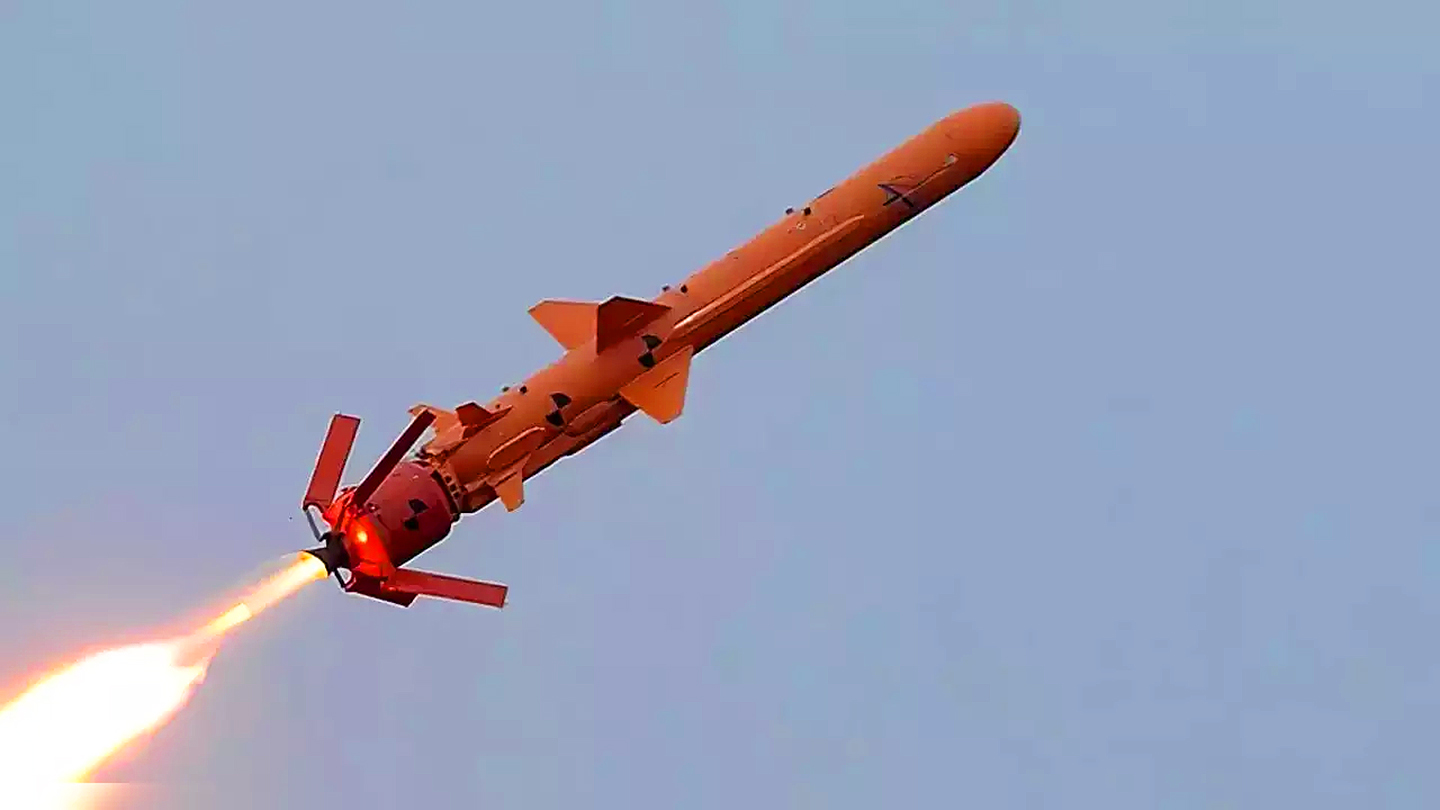The latest Ukrainian missile attack launched against Russian-occupied Crimea struck the headquarters of the Black Sea Fleet in the port of Sevastopol today. As well as missiles — reportedly Storm Shadow and/or SCALP-EG air-launched cruise missiles — the peninsula was also hit by a major cyberattack, interrupting internet services, according to Russian-installed officials there.
Videos and photos posted to social media showed a large column of smoke rising from the roof of the historic headquarters, with the plume being visible from across much of the city. Other imagery showed significant damage to the roof of the headquarters, leaving it at least partially collapsed.
The Ukrainian Armed Forces claimed they had “successfully” struck the headquarters, posting the following statement on the Telegram messaging app:
“On September 22, close to 12:00, Ukraine’s defense forces successfully struck the headquarters of the Russian Black Sea fleet command in the temporarily occupied Sevastopol.” No further details were provided by this source, although the incident was quickly made into a meme by the Ukrainian Air Force.
For its part, the Russian Ministry of Defense said that at least one Ukrainian missile struck the headquarters building and that another five missiles were brought down by local air defenses, but this cannot be independently verified.
Another missile was reportedly shot down near the town of Bakhchysarai, just inland of Sevastopol, local authorities said.
The Russian defense ministry initially reported that one serviceman had been killed in the raid, although that statement was later revised, confirming that he was still missing after the attack.
Further details have been provided by Russia’s state-run TASS news agency, which said that “debris from the missile attack on the headquarters is scattered over hundreds of meters … A fragment fell near the Sevastopol drama theater named after Anatoly Lunacharsky … Windows were broken in 10 residential buildings.”
Mikhail Razvozhayev, the Russian-installed governor of Sevastopol, said that the attack resulted in a fire and that citizens had been warned to avoid the city center, where the headquarters is located, apparently due to concerns about a follow-up attack. Razvozhayev later announced the end of the air alert but still said that people should avoid the area, with firefighters still being present and a number of roads closed.
In an initial statement on Telegram, Razvozhayev said that there were no civilian casualties or damage to civilian infrastructure. Later, he admitted that the shock wave from the blast broke glass in 10 residential buildings in the city center. The revised statement provided the following information:
“In houses and institutions along the central ring of the city, gas supply, and electricity supply have been turned off, and water supply parameters have been reduced. Please temporarily reduce water consumption if possible while the fire is being extinguished. As soon as the fire is extinguished, everything will be turned on. Please be patient.”
“Employees of the Russian Ministry of Emergency Situations are working on the spot,” the TASS report added. “Law enforcement officers are asking local residents to leave the central streets of Sevastopol. The police cordoned off the territory of the Black Sea Fleet headquarters within a radius of two blocks.”
This is not the first time the Black Sea Fleet headquarters have been attacked during the current conflict.
In July last year, a drone strike against the headquarters wounded several people and led to the cancellation of Navy Day commemorations. At the time, this was unprecedented, and, as we predicted, it was a harbinger of what was to come.
Meanwhile, Oleg Kryuchkov, an aide to Sergei Aksyonov, the Russian-backed head of Crimea, said that internet service providers on the peninsula had been subject to an “unprecedented cyberattack.”
Annexed by Russia from Ukraine in 2014, Crimea has been the focus of Ukrainian attacks since the start of the Kremlin’s full-scale invasion in February 2022. However, the regularity of these attacks has been stepped up in more recent months, while the weapons used have become more advanced.
As well as aerial drones and unmanned surface vehicles (USVs, or drone boats), Ukraine is now making use of long-range cruise missiles to hit deep into Crimea, including the air-launched Storm Shadow and SCALP-EG, provided by the United Kingdom and France, respectively, as well as the locally developed land attack version of the Neptune anti-ship missile.

At the same time, the kinds of targets that are being selected are also increasingly of higher profile and greater strategic significance. Just as important, attacks like the one today carry a considerable propaganda value to Kyiv, bringing home the vulnerability of even theoretically well-defended prestigious military targets in Russia and Russia-occupied territory.
For example, in recent weeks, Ukraine has successfully launched attacks against the dry dock at the naval port of Sevastopol, resulting in serious damage to a Black Sea Fleet submarine and amphibious landing ship. S-400 air defense systems, critical to providing coverage against airstrikes on the peninsula, have also been targeted.
In just the last two days, Ukrainian strikes against Crimea hit a command post of the Black Sea Fleet, near Verkhnosadove, apparently inflicting massive damage to the building. Just yesterday, Ukraine said it had struck Saky military airfield on the peninsula, reportedly using a combination of numerous drones as well as Neptune cruise missiles. We are still working to confirm the outcome of that attack, if it occurred as all.
This is a developing story. Stay with The War Zone for updates.
Contact the author: thomas@thedrive.com
